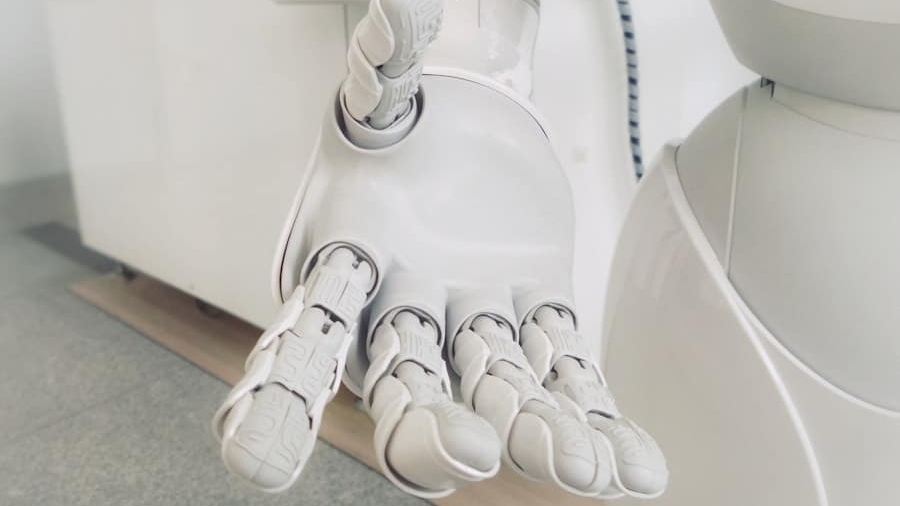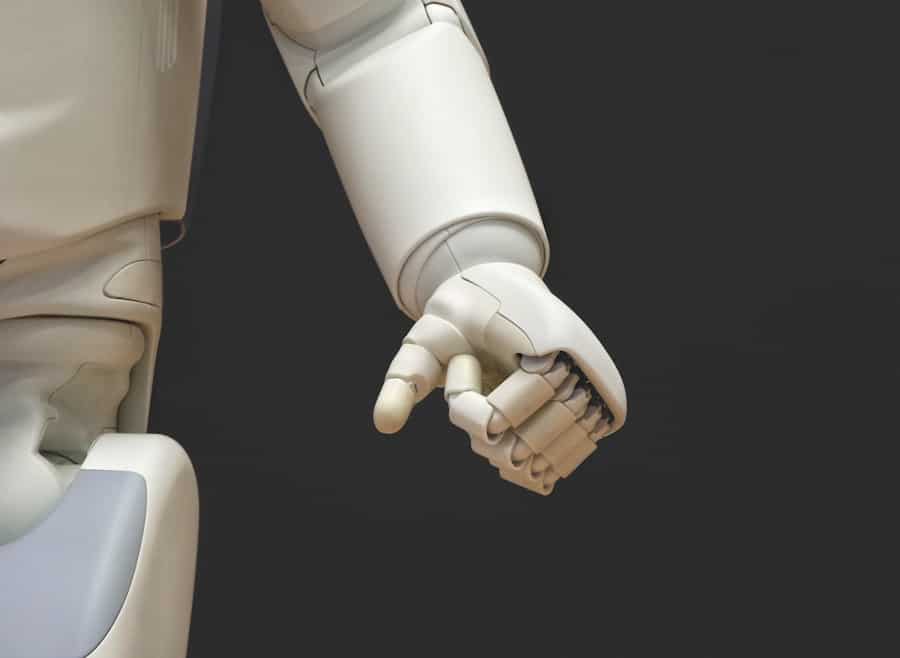The integration of artificial intelligence (AI) into workforce strategies has emerged as a transformative force in the modern business landscape. Organizations are increasingly recognizing the potential of AI to enhance operational efficiency, optimize talent management, and drive innovation. As companies navigate the complexities of a rapidly changing economic environment, AI offers tools that can analyze vast amounts of data, identify trends, and provide actionable insights.
This technological advancement is not merely a trend; it represents a fundamental shift in how businesses approach workforce management and development. AI’s capabilities extend beyond mere automation; they encompass sophisticated algorithms that can learn from data patterns and make predictions about future workforce needs. This evolution is particularly relevant in an era characterized by rapid technological advancements and shifting labor market dynamics.
Companies that harness AI effectively can gain a competitive edge by aligning their workforce strategies with the demands of the market, ensuring that they are not only reactive but also proactive in their approach to talent management.
Key Takeaways
- AI is revolutionizing workforce strategies by identifying skills gaps, predicting training needs, enhancing recruitment, and personalizing learning and development.
- AI plays a crucial role in identifying skills gaps and training needs by analyzing data and providing insights for targeted skill development programs.
- Leveraging AI for predictive analytics in workforce planning enables organizations to make informed decisions about future workforce needs and potential challenges.
- AI has a significant impact on recruitment and talent acquisition by automating processes, identifying top candidates, and improving the overall efficiency of the hiring process.
- AI contributes to personalized learning and development by analyzing individual learning styles and providing tailored training programs to enhance employee skills and knowledge.
AI’s Role in Identifying Skills Gaps and Training Needs
One of the most significant advantages of AI in workforce strategies is its ability to identify skills gaps within an organization. Traditional methods of assessing employee competencies often rely on subjective evaluations or outdated performance reviews, which can lead to misalignment between employee capabilities and organizational needs. AI, on the other hand, utilizes data-driven approaches to analyze employee performance metrics, project requirements, and industry trends.
By doing so, it can pinpoint specific areas where skills are lacking and where training is necessary. For instance, companies can implement AI-driven platforms that continuously monitor employee performance and engagement levels. These platforms can analyze data from various sources, such as project outcomes, peer reviews, and even social media interactions, to create a comprehensive picture of an employee’s skill set.
When discrepancies between required skills and actual competencies are identified, organizations can tailor training programs to address these gaps effectively. This targeted approach not only enhances employee development but also ensures that the workforce remains agile and adaptable to changing business needs.
Leveraging AI for Predictive Analytics in Workforce Planning
Predictive analytics powered by AI is revolutionizing workforce planning by enabling organizations to anticipate future staffing needs with remarkable accuracy. By analyzing historical data, market trends, and economic indicators, AI algorithms can forecast workforce requirements based on various scenarios. This capability allows businesses to make informed decisions about hiring, training, and resource allocation, ultimately leading to more strategic workforce management.
For example, a retail company may use AI to analyze seasonal sales data alongside employee performance metrics to predict staffing needs during peak shopping periods. By understanding when demand will surge, the company can proactively recruit temporary staff or adjust existing employees’ schedules to meet customer needs without overstaffing during quieter periods. This level of foresight not only optimizes labor costs but also enhances customer satisfaction by ensuring that adequate staff is available when needed.
The Impact of AI on Recruitment and Talent Acquisition
AI is reshaping the recruitment landscape by streamlining processes and enhancing the quality of talent acquisition. Traditional recruitment methods often involve time-consuming manual tasks such as sifting through resumes and conducting initial screenings. AI-powered tools can automate these processes, allowing HR professionals to focus on more strategic aspects of recruitment.
For instance, natural language processing (NLP) algorithms can analyze resumes and match candidates’ qualifications with job descriptions more efficiently than human recruiters. Moreover, AI can help mitigate biases in the hiring process by standardizing evaluations based on objective criteria rather than subjective judgments. By utilizing machine learning algorithms that are trained on diverse datasets, organizations can ensure that their recruitment practices are fair and inclusive.
This not only broadens the talent pool but also fosters a more diverse workplace culture, which has been shown to drive innovation and improve overall business performance.
AI’s Contribution to Personalized Learning and Development
Personalized learning and development programs are becoming increasingly essential in today’s workforce, where employees seek tailored experiences that align with their career aspirations. AI plays a pivotal role in creating these customized learning paths by analyzing individual employee data, including past performance, learning preferences, and career goals. By leveraging this information, organizations can design training programs that cater specifically to each employee’s needs.
For example, an organization might implement an AI-driven learning management system that curates content based on an employee’s current skill set and desired career trajectory. If an employee aspires to move into a leadership role, the system could recommend courses on management techniques, communication skills, and conflict resolution tailored to their learning style. This personalized approach not only enhances employee engagement but also accelerates skill acquisition, ultimately benefiting both the individual and the organization.
Using AI to Enhance Employee Engagement and Retention
Employee engagement is a critical factor in retention rates, and AI offers innovative solutions for enhancing this aspect of workforce management. By utilizing sentiment analysis tools powered by AI, organizations can gauge employee satisfaction through various channels such as surveys, feedback forms, and even social media interactions. These tools analyze language patterns and emotional cues to provide insights into employee morale and engagement levels.
For instance, if an organization identifies a decline in engagement scores within a specific department, it can take proactive measures to address underlying issues before they escalate into turnover problems. AI can also facilitate personalized communication strategies that resonate with employees on an individual level. By understanding what motivates each employee—whether it be recognition, career advancement opportunities, or work-life balance—organizations can tailor their engagement initiatives accordingly.
Ethical Considerations in AI-Driven Workforce Strategies
While the benefits of AI in workforce strategies are substantial, ethical considerations must be at the forefront of implementation discussions. The use of AI raises questions about privacy, data security, and potential biases embedded within algorithms. Organizations must ensure that they are transparent about how employee data is collected and used while adhering to legal regulations such as GDPR or CCPA.
Moreover, there is a risk that reliance on AI could inadvertently perpetuate existing biases if the training data used for machine learning models is not representative of diverse populations. To mitigate these risks, organizations should prioritize diversity in their data sets and regularly audit their algorithms for fairness. Establishing ethical guidelines for AI usage in workforce strategies is essential not only for compliance but also for fostering trust among employees who may be wary of how their data is being utilized.
The Future of AI in Shaping Workforce Strategies
As technology continues to evolve at an unprecedented pace, the future of AI in shaping workforce strategies appears promising yet complex. Organizations that embrace AI will likely find themselves at the forefront of innovation in talent management practices. The ongoing development of more sophisticated algorithms will enable even deeper insights into workforce dynamics, allowing businesses to adapt swiftly to changing market conditions.
Looking ahead, we may see a greater emphasis on collaborative human-AI partnerships within organizations. Rather than viewing AI as a replacement for human roles, companies will likely leverage it as a tool that augments human capabilities. This shift will require a cultural transformation within organizations as employees learn to work alongside AI systems effectively.
Training programs will need to evolve to include digital literacy skills that empower employees to harness AI tools for their professional growth. In conclusion, the integration of AI into workforce strategies is not merely a technological upgrade; it represents a paradigm shift in how organizations manage talent and drive performance.
The future promises a more dynamic and responsive workforce landscape where human ingenuity and artificial intelligence coexist harmoniously to achieve organizational goals.
A related article discussing how TechRepublic helps IT decision-makers identify technologies can provide valuable insights for companies looking to build future-proof workforce strategies. By staying informed about the latest tech trends and advancements, businesses can better prepare for the changing landscape of work and ensure they are equipped with the right tools and resources to stay competitive. To read more about this topic, check out the article here.
FAQs
What is AI?
AI, or artificial intelligence, refers to the simulation of human intelligence processes by machines, especially computer systems. These processes include learning, reasoning, and self-correction.
How is AI being used to build future-proof workforce strategies?
AI is being used to build future-proof workforce strategies by helping companies analyze data to identify skills gaps, predict future workforce needs, and automate repetitive tasks. AI can also assist in identifying potential candidates for upskilling and reskilling, as well as in creating personalized learning and development plans for employees.
What are the benefits of using AI for workforce strategies?
Using AI for workforce strategies can help companies stay ahead of the curve by identifying and addressing skills gaps, predicting future talent needs, and automating routine tasks. This can lead to a more agile and adaptable workforce, better equipped to handle the challenges of the future.
Are there any potential drawbacks to using AI for workforce strategies?
While AI can provide valuable insights and automation for workforce strategies, there are potential drawbacks to consider, such as the risk of bias in AI algorithms, job displacement due to automation, and the need for ongoing human oversight and intervention to ensure the ethical and fair use of AI in workforce planning.



